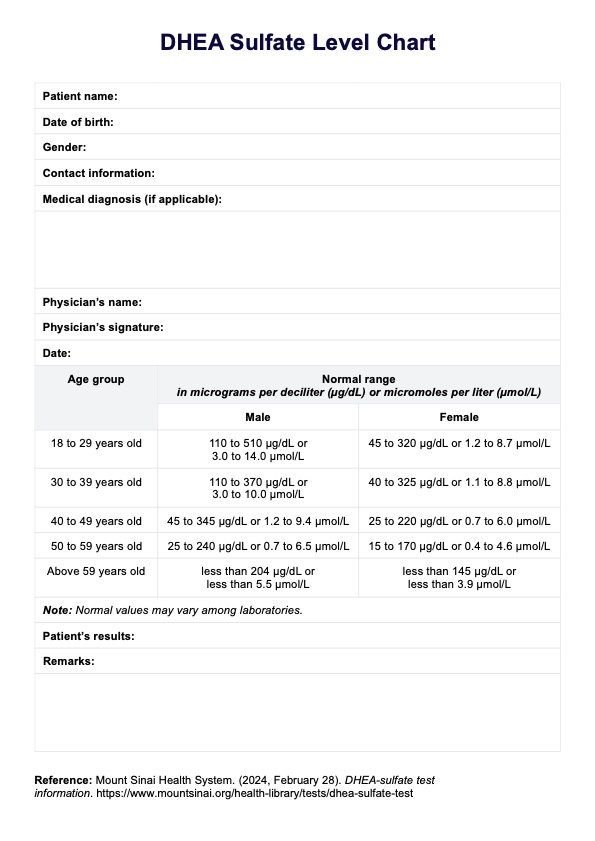DHEA levels help assess adrenal gland function and can provide insights into hormone-related conditions or adrenal disorders.

DHEA Sulfate level chart
Get this DHEA Sulfate Level Chart to understand normal ranges for various ages and genders, aiding in adrenal health assessments and medical diagnoses.
Use Template
DHEA Sulfate level chart Template
Commonly asked questions
High DHEA-sulfate levels can indicate conditions like PCOS, adrenal tumors, or excess adrenal activity, which may lead to symptoms like acne, hair loss, or irregular periods.
Usually, no special preparation is needed, but your doctor might ask you to stop certain medications.
EHR and practice management software
Get started for free
*No credit card required
Free
$0/usd
Unlimited clients
Telehealth
1GB of storage
Client portal text
Automated billing and online payments











